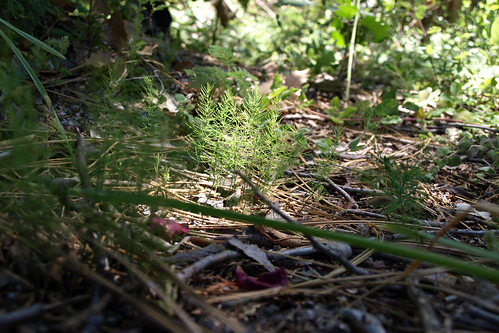Last weekend, I presented on forest gardening at the tiny library in town. I’ve presented a few times on the topic, and at the conclusion of the presentation, the thought occurred to me that my food forest is largely in my head. That is, though I’ve planted a number of things in the initial plot – currants and gooseberries and grapes and elderberries and blueberries and lingonberries and Nanking cherries and beach plums and alliums of all types and sorrel and Jerusalem artichokes and rhubarb and horseradish and Saskatoons and many other seeds and probably a few things I’ve forgotten – the forest itself doesn’t look a whole lot different than when I started. That is, most of the plants are still quite small, and blend in with the native groundcover, and many of the seeds and plants that germinated and grew in the spring have died back for the summer (hopefully to return next year). As such, to the untrained eye, there isn’t much to see. If you know what you’re looking for, however, and are willing to get low, there are lots of little successes. Take this asparagus, for example.
Asparagus crowns, when you buy them at the nursery or through the mail, are supposedly all male. Females “waste” energy making berries and seeds, and so the ideal is to have the plants direct all of their energies to stalk formation. That being said, every time I’ve planted asparagus, I’ve ended up with at least one or two females. I collected last year’s berries and planted them here and there in the food forest, and several small patches have grown up as a result. With any luck there will be asparagus for the picking in about 4 years. It’s a marathon, not a sprint.


